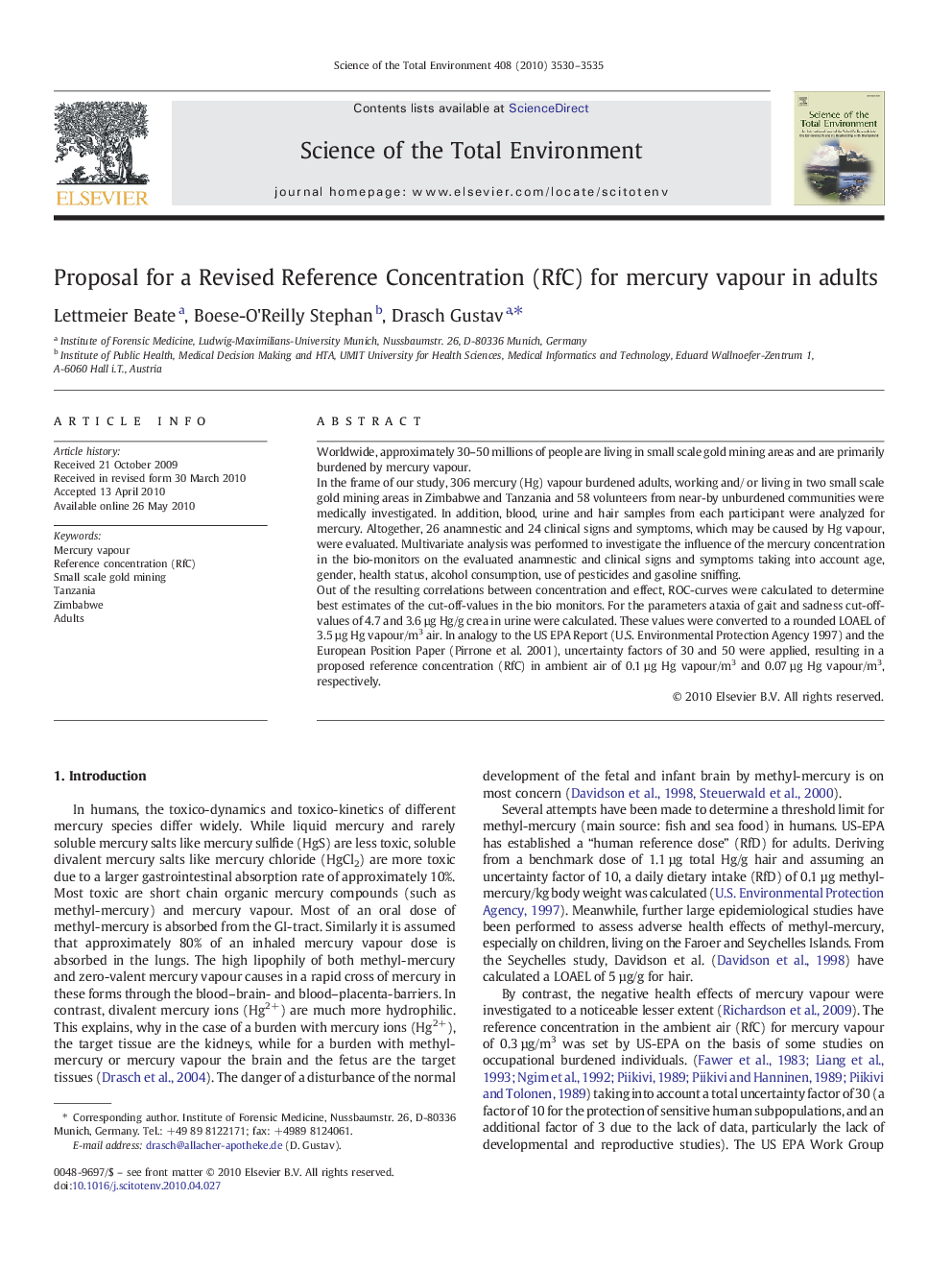| Article ID | Journal | Published Year | Pages | File Type |
|---|---|---|---|---|
| 4431217 | Science of The Total Environment | 2010 | 6 Pages |
Worldwide, approximately 30–50 millions of people are living in small scale gold mining areas and are primarily burdened by mercury vapour.In the frame of our study, 306 mercury (Hg) vapour burdened adults, working and/ or living in two small scale gold mining areas in Zimbabwe and Tanzania and 58 volunteers from near-by unburdened communities were medically investigated. In addition, blood, urine and hair samples from each participant were analyzed for mercury. Altogether, 26 anamnestic and 24 clinical signs and symptoms, which may be caused by Hg vapour, were evaluated. Multivariate analysis was performed to investigate the influence of the mercury concentration in the bio-monitors on the evaluated anamnestic and clinical signs and symptoms taking into account age, gender, health status, alcohol consumption, use of pesticides and gasoline sniffing.Out of the resulting correlations between concentration and effect, ROC-curves were calculated to determine best estimates of the cut-off-values in the bio monitors. For the parameters ataxia of gait and sadness cut-off-values of 4.7 and 3.6 µg Hg/g crea in urine were calculated. These values were converted to a rounded LOAEL of 3.5 µg Hg vapour/m3 air. In analogy to the US EPA Report (U.S. Environmental Protection Agency 1997) and the European Position Paper (Pirrone et al. 2001), uncertainty factors of 30 and 50 were applied, resulting in a proposed reference concentration (RfC) in ambient air of 0.1 µg Hg vapour/m3 and 0.07 µg Hg vapour/m3, respectively.
